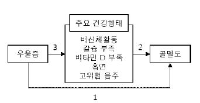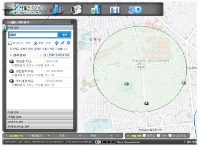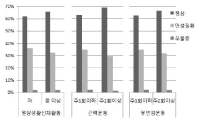PURPOSE This study conducted a longitudinal analysis of physical activity levels and characteristics of middle-school boys and girls over a three-year period before and after the COVID-19 pandemic. METHODS This study used a sequential mixed-methods research design. In the quantitative study; three-dimensional accelerometers were used to measure weekly physical activity and sedentary time over three years (2019, 2020, and 2021) among 33 middle-school boys and girls, and the data were analyzed using repeated measures analysis of variance. In the qualitative study, data were collected and analyzed through focus group interviews with five participants. RESULTS The quantitative study indicated a significant increase in sedentary behavior and significant decrease in low-intensity activity and MVPA during the first year of the COVID-19 pandemic. In the second year of the pandemic, no significant difference was observed in sedentary behavior, low-intensity activity, and MVPA compared to the data collected in the first year. During the pandemic’s first year, qualitative study identified the following physical activity problems: “lockdowns,” “sedentarization of leisure,” and “reduced structured physical activity.” The following reasons were identified for the lack of improvement in physical activity during the second year: “intensified sedentary lifestyle habits,” “weak social networks,” and “lack of energy to exercise.” CONCLUSIONS The COVID-19 pandemic has led to a significant decrease in physical activity and a significant increase in sedentary behavior among middle-school students in South Korea, and even as the environments for physical activity have recovered, the physical activity problems of the early stages of the pandemic have not improved.
PURPOSE This study aimed to analyze physical activity (sedentary, light, moderate to vigorous physical activity [MVPA]) characteristics of middle school students based on region (urban and rural) and sex. METHODS Data were collected from 216 students across 6 middle schools located in medium-sized urban (3 schools) and rural areas (3 schools), and the relevant physical activity was measured using a three-dimensional accelerometer (GT3X model). The collected data were inputted into the SPSS 20.0, and descriptive analysis and two-way ANOVA based on region and gender were performed (<.05). RESULTS The descriptive statistical analysis resulted in the following achievement rate of the physical activity standard (MVPA 60 minutes/day): 9.4%. The two-way ANOVA showed that the main effect according to gender was found in sedentary activity (F=5.258), light activity (F=6.790), and MVPA (F=32.274); furthermore, the main effect according to region was found in light activity (F=10.888) and MVPA (F=7.876). Interaction effect according to region and gender was found at all intensities, and the gap between rural and urban in male students was larger compared to that of female students. CONCLUSIONS After COVID-19, the level of physical activity among adolescents has worsened; this study found the problem of "decrease in physical activity; increase in sedentary activity" to be more serious among male students in urban areas.
PURPOSE This study investigated the associations between mental health and physical activity with all-cause mortality in persons with disability. METHODS A total of 595 participants (39.3% women) aged 45≥ years, who participated in the Korean longitudinal study of aging (KLoSA) were included in this study. The Korean version of mini-mental state examination (K-MMSE) and the center for epidemiologic studies depression scale (CES-D) were used to assess cognitive impairment and depressive symptoms, respectively. The participants were classified into active and inactive groups based on physical activity of 150 min/week. Cox’s proportional regression analyses were used to determine the hazard ratio (HR) and 95% confidence interval (CI) of mental health and physical activity relating to all-cause mortality. RESULTS During the follow-up period (11.8±4.1 years), a total of 218 (36.6%) deaths occurred from all-causes. Participants in the inactive group had significantly higher cognitive impairment (p =0.046), depressive symptoms (p =0.001), and all-cause mortality (p=0.037) than those in the active group. Compared to participants in the normal (HR=1), cognitive impairment (HR=2.229, 95% CI=1.645-3.020, p<0.001), and depressive symptoms groups (HR=1.542, 95% CI=1.136-2.091, p<0.001), those in the inactive group had significantly higher HR related to all-cause mortality. However, in the active group, cognitive function and depressive symptoms were not associated with all-cause mortality. CONCLUSIONS The current finding suggests that the promotion of physical activity may play an important role in preventing premature death from all-causes in persons with disability, especially among those with mental health problems.

The purpose of this study was to investigate the relationship between depression and bone mineral density in Korean elder men (55+), and test mediating role of health behaviors. Korean National Health and Nutrition Examination Survey 2006-2011 data were analyzed. Bone mineral density was measured using DXA. Depression was measured by whether a participant had diagnosed depression, depressed mood lasted longer than 2 weeks, and/or suicidal thinking. Mediating health behaviors were serum vitamine D, calcium intake, high-risk drinking, endurance physical actiity, and resistance exercise. The associations among depression, health behaviors, and bone mineral density with demographic covariates were tested by linear regression, logistic regression, and path analysis. Diagnosed depression was not significantly associated with bone mineral density. Men who experienced substantial depressed mood and suicidal thinking has significantly lower bone mineral density than non-experienced counterparts. The effect of suicidal thinking on bone mineral density was mediated by endurance physical activity only. This study results suggest that elder men who experienced severely depressed mood and suicidal thinking were at-risk population for osteopenia. Also, physical activity intervention seems to be a priority to prevent osteoporosis comorbidity in depressed people.



This study measured the accessibility of public exercise facilities within a residental area of a metropolitan community and examined how the accessibility can affect physical activity participation of residents. Initially, a total of 639 residents, who were aged between 19-70, visited Metabolic Syndrome Management Center of the Community Public Health Center, and registered for a Obesity Clinic Program, was listed as potential subjects. And those who responded to Physical Activity Questionnaire were selected for the analyses (n=92, 14.3% of 639). The relationships between physical activity level and accessibility to public exercise facilities were analyzed. Objective distance to public facility was related to ‘volume of participation to vigorous physical activity(r=.209)’, 'total volume of participation to physical activity(r=.206)’. And perceived distance to public facility was related to ‘volume of participation to vigorous-intensity physical activity(r=.235)’. perceived transport time to public facility was related to ‘duration of participation to vigorous-intensity physical activity(r=.239)’, ’volume of participation to vigorous-intensity physical activity(r=.306)’, and ‘volume of participation to total physical activity(r=.273)’. In contrast, the difference between objective distance to public facility and perceived subjective distance to the facility was negatively related to ‘duration of participation to moderate-intensity physical activity(r=-.221)’. The perceived numbers of public facility was positively related to ‘frequency of participation to vigorous-intensity physical activity(r=.237)’, ‘frequency of participation to walking(r=.273)’, ‘volume of participation to walking(r=.251)’ and 'total volume of participation to physical activity(r=.252)’. The predictor of 'total volume of participation to physical activity was perceived numbers of public facility(R2=.153, p=.046). The results revealed that the subjective accessibility to public health facilities was more influential to physical activity participation than the objective accessibility. Further research was warranted while using diverse populations as well as considering a inclusion of environmental factors.


PURPOSE This study aimed to examine the associations between accelerometer-measured physical activity and both cardiometabolic disease risk factors and metabolic syndrome in Korean adults. METHODS We performed a retrospective cohort study with age-sex matched case-control using data from the 2014-2016 Korea National Health and Nutrition Examination Survey, which was administered to South Korean adults (n=320). Individuals were categorized into quartiles based on accelerometer-measured moderate-to-vigorous physical activity (MVPA). Demographic and physical characteristics, waist circumference, visceral adiposity index, blood pressure, lipid profiles, and TG/HDL-C were observed. The associations between MVPA status and cardiometabolic disease risk factors as well as metabolic syndrome were determined using multiple logistic regression. RESULTS For the waist circumference, SBP, DBP, MBP, visceral adiposity, triglyceride, and a surrogate estimate of insulin resistance, the Q1 and Q2 groups had higher means compared with the Q3 and Q4 groups. HDL-C was higher in the Q3 and Q4 groups compared to the Q1 and Q2 groups. Odds ratios for cardiometabolic disease risk factors and metabolic syndrome decreased in a curvilinear manner with the increasing quartile of MVPA. CONCLUSIONS Adults with higher MVPA participation were strongly associated with cardiometabolic disease risk factors and metabolic syndrome.
Purpose The purpose of this sequential mixed-method study is to compare the levels of Moderate to Vigorous Physical Activity (MVPA) between the students with intellectual disabilities and students without disabilities in different types of inclusive physical education classes and to understand why different levels of MVPA occur. Methods For this purpose, 17 students with intellectual disabilities and 102 students without disabilities participated in this study, and the levels of MVPA in inclusive physical education classes were accessed using thee dimensional accelerometers. The collected data were analyzed using independent sample t-test. To understand the different levels of MVPA identified in quantitative analysis, four teachers were interviewed. Results Results showed that different levels of MVPA were found in inclusive physical education classes, and this is because the students with intellectual disabilities had participation constraints and teachers did not have knowledge to deal with those constraints. Considering gender difference, only different levels of MVPA were found among male students, which could be stemmed from few opportunities of cooperative works between male students with intellectual disabilities and male students without disabilities. Considering types of inclusive physical education classes, significant different levels of MVPA were identified in tee ball classes. The reason for this could be that the rule of tee ball is too complicated and too many team tasks for the students with intellectual disabilities to understand and to execute. Conclusions Based on the results, practical teaching strategies to increase levels of MVPA of the students with intellectual disabilities are provided in the discussion section.

This study examined the association between physical activity (PA) and the prevalence of chronic disease and chronic depression. Additionally, the relationships between PA and health-related quality of life (HRQoL) among general population, categorized by healthy, chronic disease and depression were investigated. Cross-sectional data includes 9,739 participants (4,351 males, 5,659 females, over 19 years old) who completed physical activity, chronic disease and HRQoL questionnaires from The Fifth Korea National Health and Nutrition Examination Survey (KNHANES). Complex samples frequency, descriptive, cross-tab and logistic analysis were used. Estimated prevalence of chronic disease and depression were significantly different between PA levels and frequency. Based on odds ratios (OR) and 95% confidence intervals (CI), participating in lower levels of daily PA including less resistance and flexibility exercise were associated with an increased likelihood of chronic disease. Less frequency of resistance PA was also associated with an increased likelihood of depression. Estimated prevalence of HRQoL was different according to PA in the healthy and chronic disease populations. Adjusted OR and confidence intervals represented through lower levels of daily PA and less frequency of resistance PA were associated with an increased likelihood of poor HRQoL in the chronic disease population. No significant OR between PA and HRQoL in the depression population was observed.


Researchers and teachers in physical education have emphasized sportsmenship in sport education setting. However, how to teach sportsmenship in physical education is not proposed yet. The purpose of this study was (1) to develop an instructional program for teaching and learning sportsmanship and (2) to examine its effects on sportsmenship. Participants were 7th middle school students(N=95). Data were collected using Sportsmanship Test(Park, 2014), open-ended questionnaire and in-depth interviews with students. The data were analyzed through paired samples t-test and qualitative content analysis. Results showed that significant difference was observed in students' sportsmanship test scores after instruction. Analysis of interview data showed that students experience the value of utmost effort, respect for opponents, respect for teammates, acknowledging results, respect for judgment, and valuable lessons related to character education. Implications for sportsmanship education using instructional program were discussed.



PURPOSE This study aimed to analyze research trends in physical education within small schools from 1992 to the present, offering insights and directions for future research in this domain. METHODS To achieve this objective, we gathered data from 22 domestic journals utilizing keywords such as “small school,” “combined class,” “farming and fishing village,” “physical education,” and “sports.” Subsequently, the collected data encompassing topics, keywords, methods, subjects, and research areas, were organized using Excel. We employed the Word-Cloud program for the analysis of frequency by period and subject words by period. RESULTS Trends in physical education within small schools were categorized into three primary aspects: subject, method, and research area. Firstly, concerning research topics, the predominant focus centered on the application of teaching and learning as well as the curriculum management, with less emphasis on pre-service and incumbent teachers. Secondly, research methods shifted from quantitative to qualitative approaches starting in the 2000s. However, the utilization of qualitative research methods displayed limited diversity. Lastly, we analyzed the research area by classifying it into the region where the research subject is situated and the region to which the researcher belongs. The Gyeongsang and Gangwon regions constituted the majority in both categories, with over half of the researchers hailing from Gyeongbuk. CONCLUSIONS This study underscores the growing necessity for research into physical activity within small schools, given the increasing proportion of such institutions. It offers valuable insights for future research endeavors in the realm of physical activity within small schools.